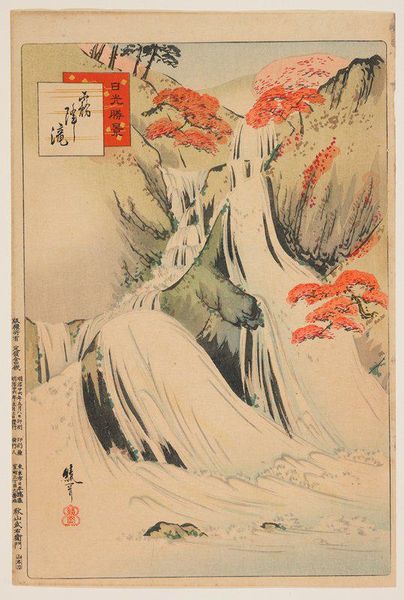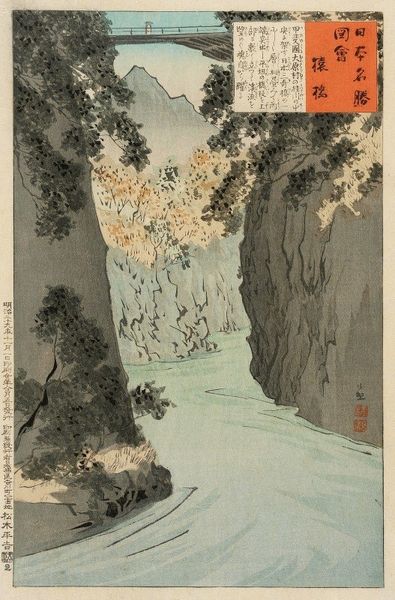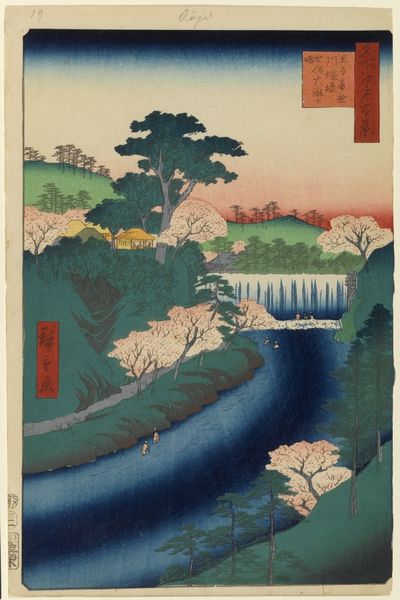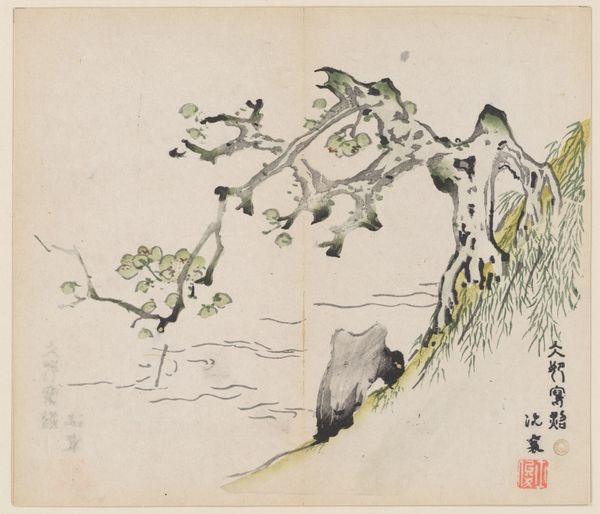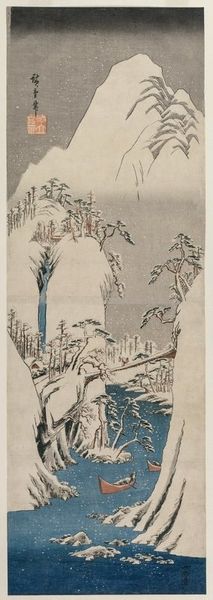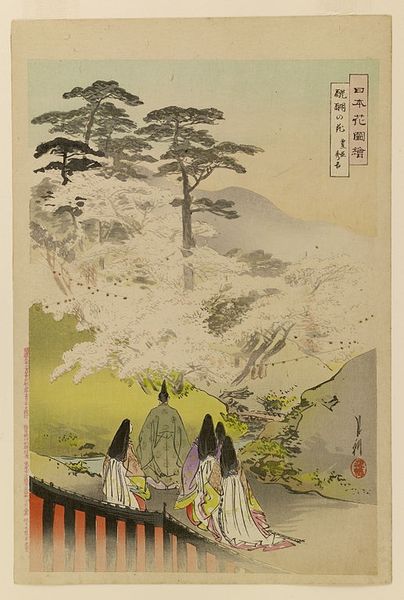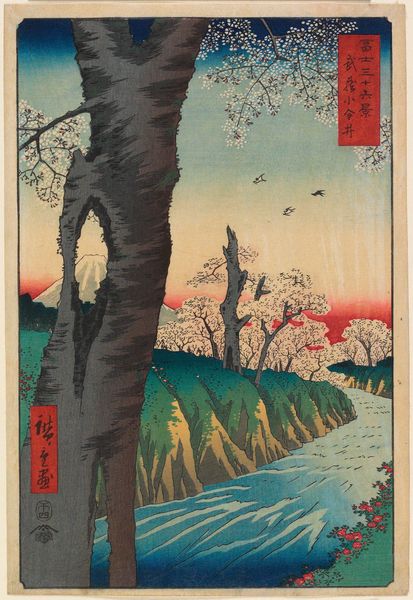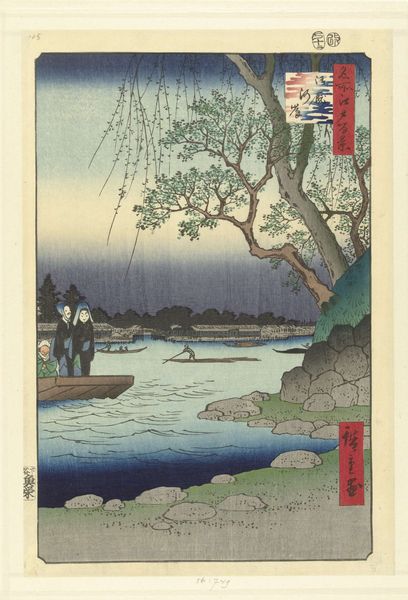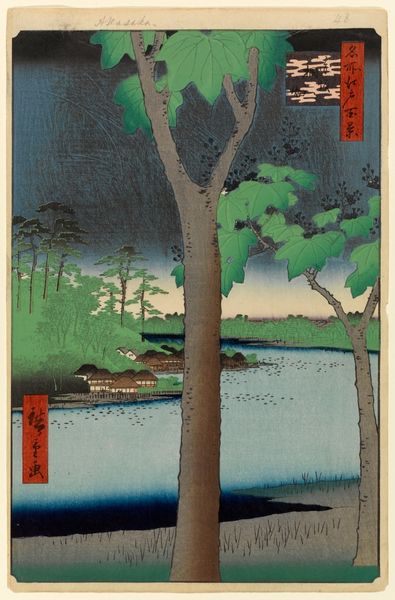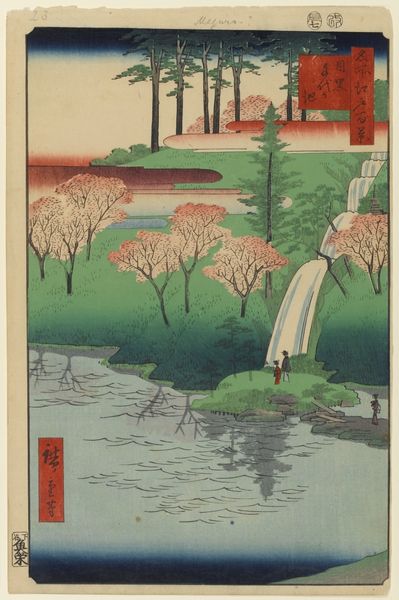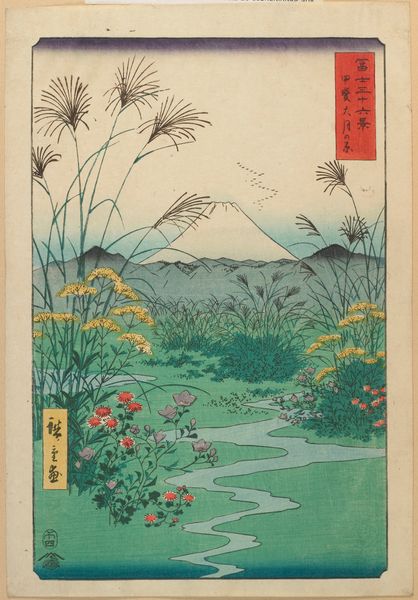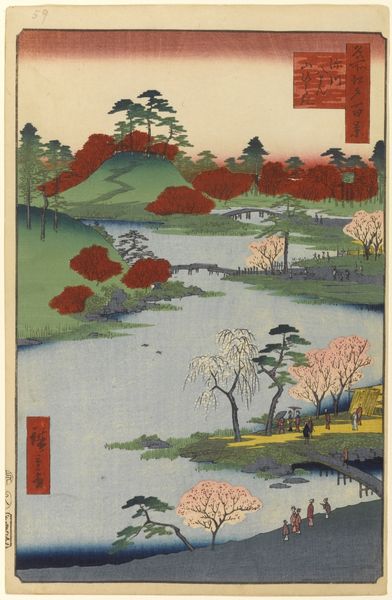
Copyright: Public domain
Ogata Gekko created 'Nihon hana zue,' a woodblock print, during a period of significant transformation in Japan. The Meiji era, from 1868 to 1912, marked a shift as Japan opened to Western influences while seeking to redefine its national identity. This print presents a contemplative scene: an elderly man seated beneath cherry trees in full bloom, a potent symbol of spring and renewal. The choice of an older male subject and cherry blossoms roots this work in traditional Japanese aesthetics, even as the printmaking technique reflects modern developments in art production. Gekko's delicate lines capture the fleeting beauty of the cherry blossoms, yet there's also a sense of solitude in the figure depicted. The print is a meditation on aging, beauty, and the passage of time, universal themes rendered through a distinctly Japanese lens. It encapsulates the tension between embracing progress and preserving cultural heritage during a period of rapid modernization, asking us to consider what it means to hold onto tradition.
Comments
No comments
Be the first to comment and join the conversation on the ultimate creative platform.
